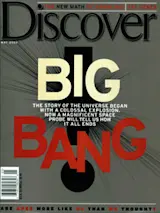A side from his dancing left foot, anthony curtis, 42, looks like any other sucker tourist dropping a wad at the Binion's Horseshoe blackjack tables in Las Vegas. Hair slicked back, nose busted twice from rugby, lean as a desert lizard, left hand curled around his second imported beer--not water, a dead giveaway for card-counters--and with a thin but frequent smile, he seems wound tighter than most, maybe, but inside the bounds--could be a killer lawyer or military. After three minutes of play, he's down $100. He's flirting with the dealer ("Why are you so friendly? The other dealers here are all crabby"), seems distracted by the waitress's three inches of cleavage, and acts surprised when his luck turns. "My God, this never happens," he murmurs as he flips a natural 21: a 10 of hearts and ace of diamonds. Next two hands, he stands on 17 and 18; the ...
The New Math of Gambling
Today 47 states offer legal gambling. All you need to beat the house is some Internet savvy, the right number-crunching software, a thorough grounding in probability theory, and a few hours with an acting coach
More on Discover
Stay Curious
SubscribeTo The Magazine
Save up to 40% off the cover price when you subscribe to Discover magazine.
Subscribe













